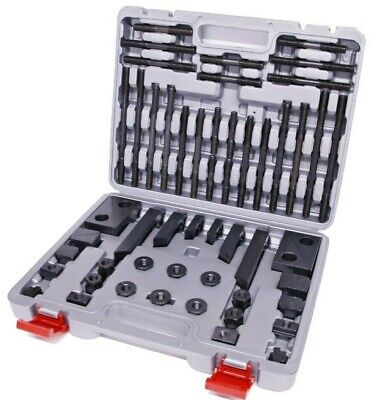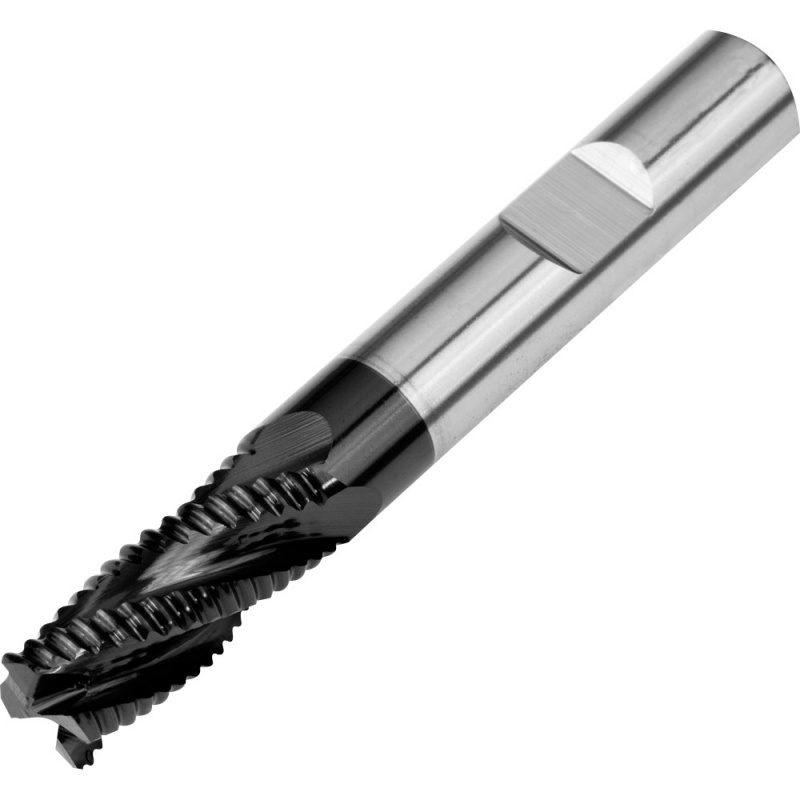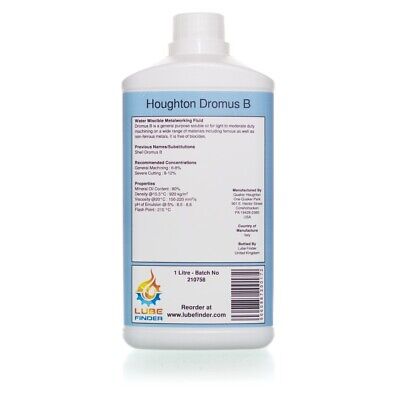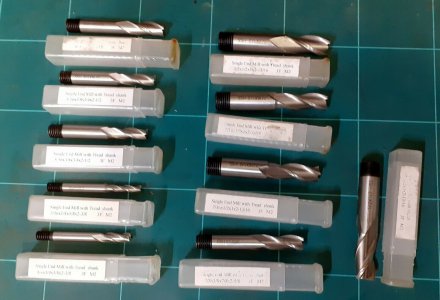- Joined
- Dec 23, 2019
- Messages
- 1,138
I'll chime in with a few links being the right side of the pond 
Parallels:

 www.zoro.co.uk
www.zoro.co.uk
After much research I settled on that set. Having a range has been a godsend.
Vise:
 www.arceurotrade.co.uk
www.arceurotrade.co.uk
I settled on the 125mm version for the Bridgeport, but you're probably looking for the 100mm. Essentially the same as the Glacern that our American friends rate. Needs a little finishing here and there but it ain't half bad for the money. Having said that, I've not once used the swivel base, and something like this might be better suited to your machine:
 www.arceurotrade.co.uk
www.arceurotrade.co.uk
Step clamps:

 www.arceurotrade.co.uk
www.arceurotrade.co.uk
Something like that. Lots of sets around to suit.
End mills:
I've found their tools to be excellent. I'd go for some HSS to start with. Grab yourself a 12mm rougher:

And a little range of diameters:
You'll need collets or end mill holders to suit, but my knowledge is lacking in MT territory.
A fly cutter is definitely a good Idea:
I like this coolant:

No need for a pump; mixing some up in a spill proof kids paint cup and applying with a brush is quite sufficient.
That ought to get you going
Parallels:

Oxford Hardened & Ground Steel Parallel Set 18 Pie| at Zoro
Oxford - Hardened & Ground Steel Parallel Set 18 Piece available at Zoro.co.uk - UK's Leading Supplier of DIY Tools and Supplies'
After much research I settled on that set. Having a range has been a godsend.
Vise:
ARC Versatile Milling Vices - with swivel base - Arc Euro Trade
ARC Versatile milling vices with Angle Lock clamping. Can be used on its own or with the swivel base supplied. Sizes: 80mm, 100mm & 125mm.
I settled on the 125mm version for the Bridgeport, but you're probably looking for the 100mm. Essentially the same as the Glacern that our American friends rate. Needs a little finishing here and there but it ain't half bad for the money. Having said that, I've not once used the swivel base, and something like this might be better suited to your machine:
ARC Versatile SG Iron Milling Vices - Arc Euro Trade
ARC Versatile SG (spheroidal graphite) iron milling vices with Angle Lock clamping. May be used horizontally or vertically. Sizes: 100mm & 160mm
Step clamps:

Clamping Kit 58 Piece M8 Stud : 10mm Slot New Style | eBay
Find many great new & used options and get the best deals for Clamping Kit 58 Piece M8 Stud : 10mm Slot New Style at the best online prices at eBay! Free delivery for many products!
www.ebay.co.uk
58pc Clamping Sets - Arc Euro Trade
Clamping sets for T-slot width: 10mm, 12mm, 14mm or 16mm. Includes: 6 clamping bars, 12 step blocks, 24 studs, 6 T-nuts, 6 flange nuts, 4 coupling nuts.
Something like that. Lots of sets around to suit.
End mills:
HSS End Mills Associated Production Tools
Hss High Speed Steel End Mills General Use, End Milling Cutters for Roughing, Finishing, Stainless, Titanium Alloys, Un-coated for Aluminium.
www.shop-apt.co.uk
I've found their tools to be excellent. I'd go for some HSS to start with. Grab yourself a 12mm rougher:

12mm Diameter Fine Pitch Ripper 4 Flute HSS High Speed Steel 8% Cobalt TiAlN Coated
12mm Diameter Fine Pitch Ripper 4 Flute HSS High Speed Steel 8% Cobalt TiAlN Coated.
www.shop-apt.co.uk
And a little range of diameters:
4 Flute End Mills HSS 8% Cobalt TiAlN Coated 40HRC Associated Production Tools
4 Flute High Speed Steel End Mills TiALN Coated for General Use on materials up to 40HRC
www.shop-apt.co.uk
You'll need collets or end mill holders to suit, but my knowledge is lacking in MT territory.
A fly cutter is definitely a good Idea:
I like this coolant:

1L Quaker Houghton Dromus B (Shell) Water Soluble Cutting Fluid Coolant 20L Suds | eBay
Quaker Houghton Dromus B is a general purpose soluble oil for light to moderate duty machining on a wide range of materials.
www.ebay.co.uk
No need for a pump; mixing some up in a spill proof kids paint cup and applying with a brush is quite sufficient.
That ought to get you going
Last edited:


